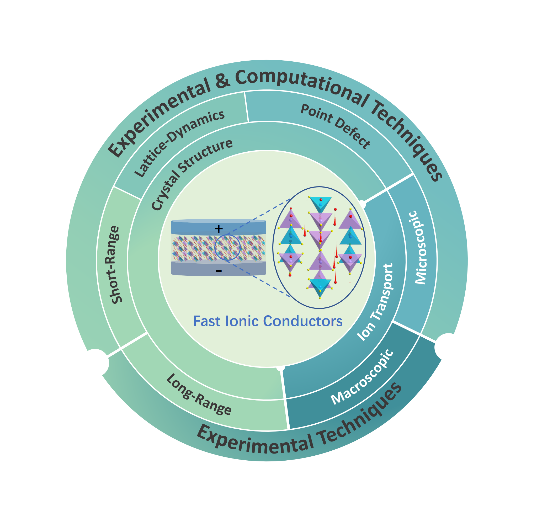Ion transport mechanism in solid-state ionic conductors

Solid-state ion batteries have attracted considerable attention due to their safety, high energy density, and fast charging capability characteristics. Fast ionic conductor is the key component of the solid-state battery. However, there are limited types of ionic conductors that own comparable ionic conductivity to liquid counterparts. The mechanisms of ion transport in the crystal lattice of fast ionic conductors are still not fully understood as it is a complex physical phenomenon. We aim to explore the fundamental mechanisms of ionic conductivity and the underlying physical descriptors of ionic conduction from the point of lattice dynamics, especially in the term of lattice vibration (or phonon). Comprehensive understanding of ion transport can provide rational design rule for better ionic conductivity and new fast ionic conductors.
Publication:
- Gao, Y. R., N. Li, Y. Wu, W. Yang and S. H. Bo (2021). “Rethinking the Design of Ionic Conductors Using Meyer–Neldel–Conductivity Plot.” Advanced Energy Materials. 11(13).
- Gao, Y. R., A. M. Nolan, P. Du, Y. F. Wu, C. Yang, Q. L. Chen, Y. F. Mo and S. H. Bo (2020). “Classical and emerging characterization techniques for investigation of ion transport mechanisms in crystalline fast ionic conductors.” Chemical Reviews 120(13): 5954-6008.
- Mei, X., Y. Wu, Y. Gao, Y. Zhu, S. H. Bo and Y. Guo (2020). “A quantitative correlation between macromolecular crystallinity and ionic conductivity in polymer-ceramic composite solid electrolytes.” Materials Today Communications 24.